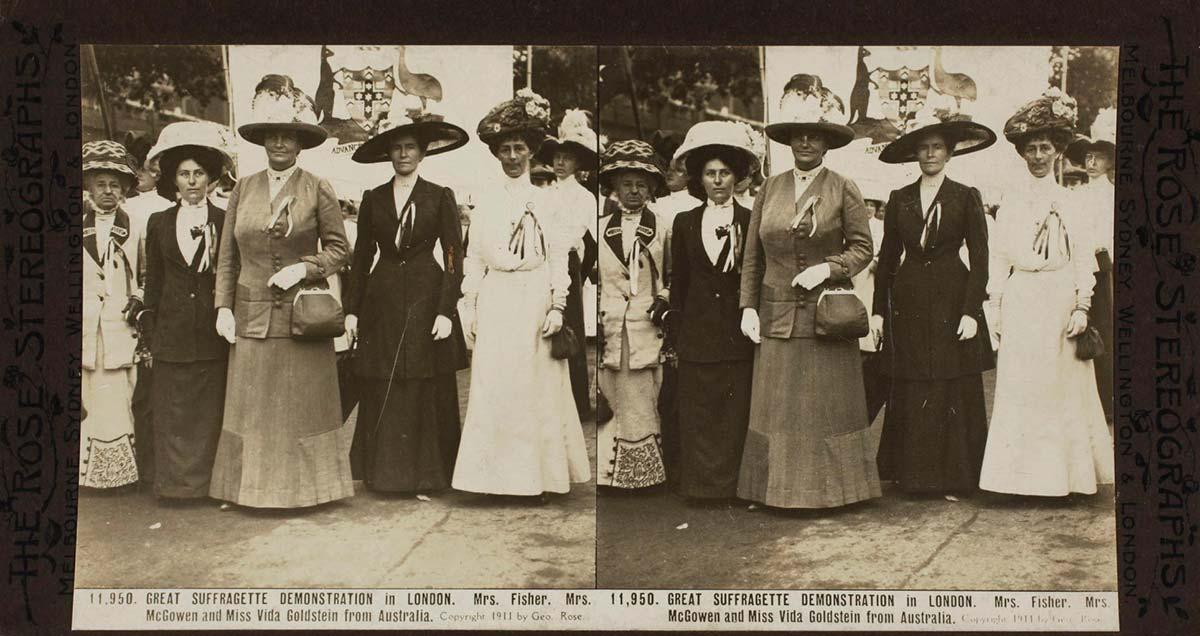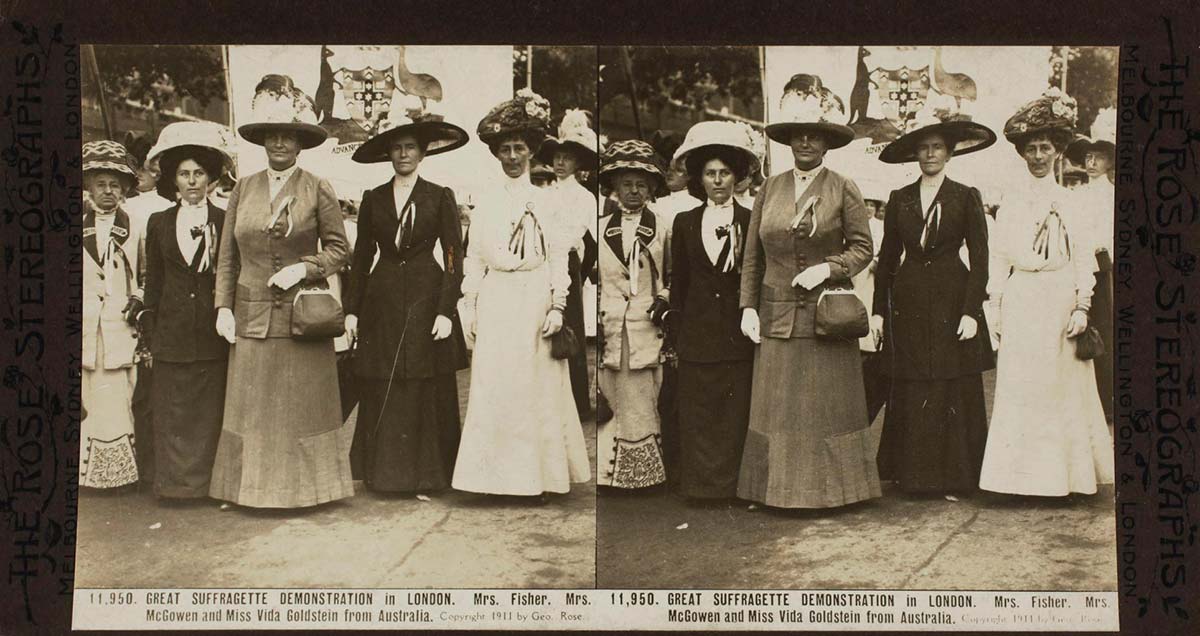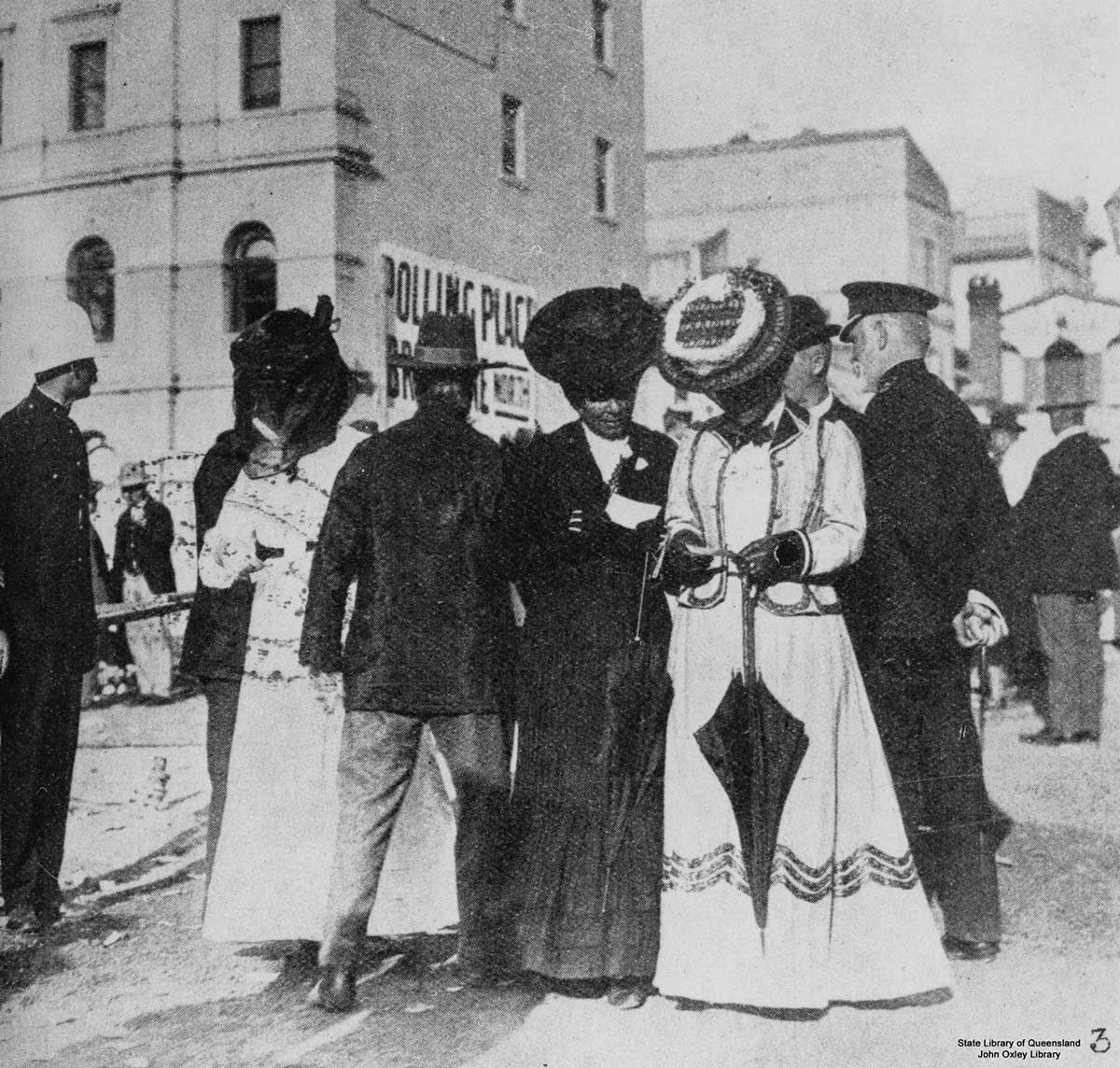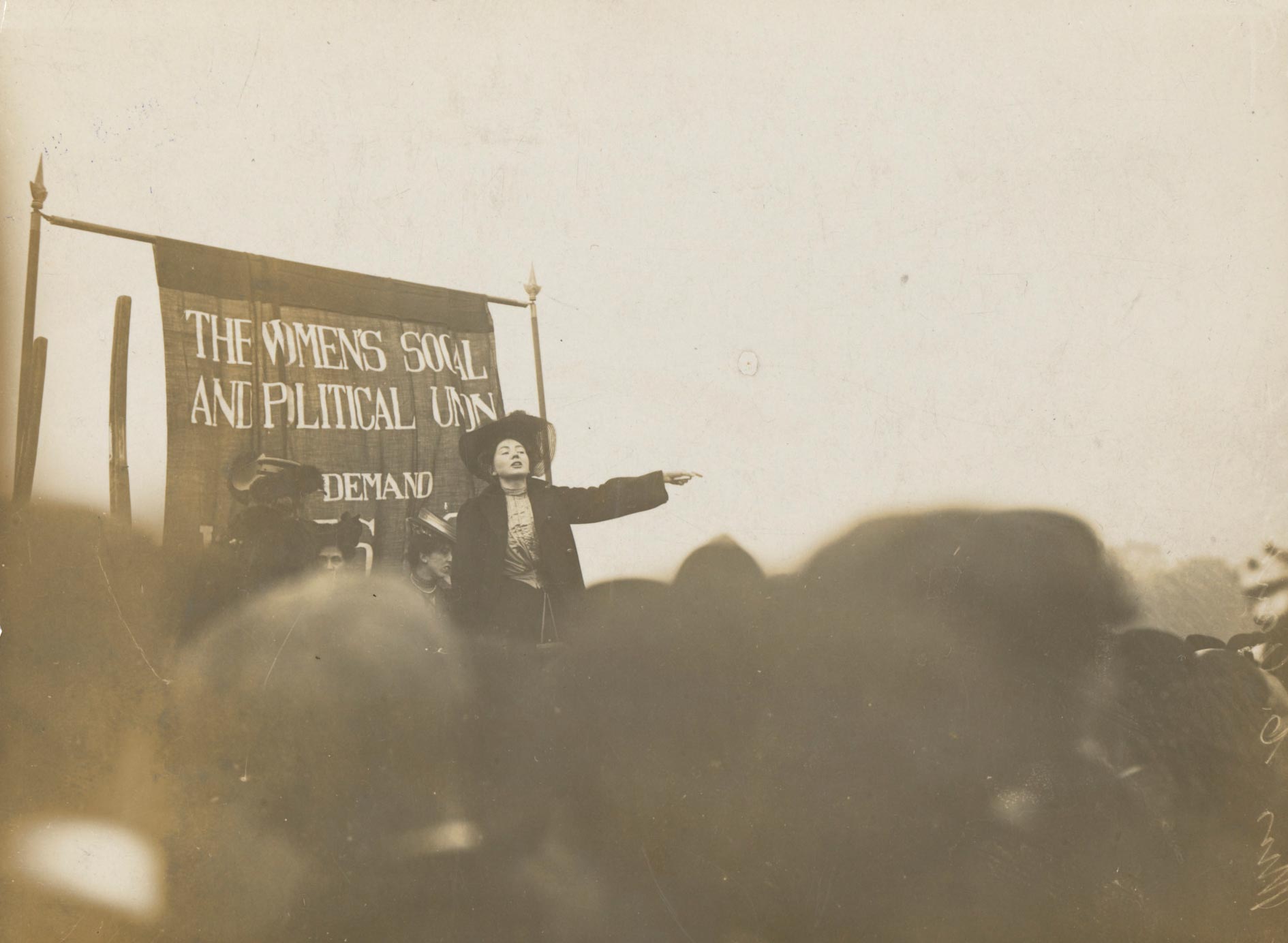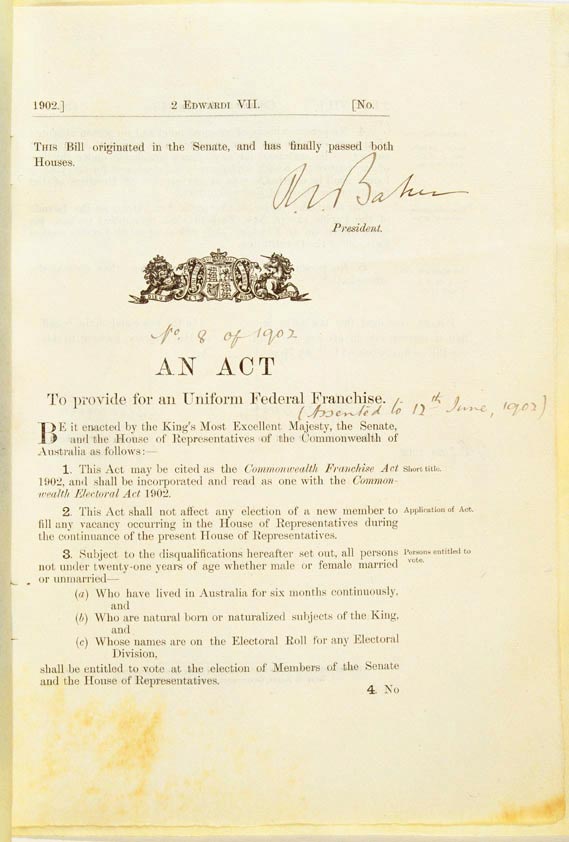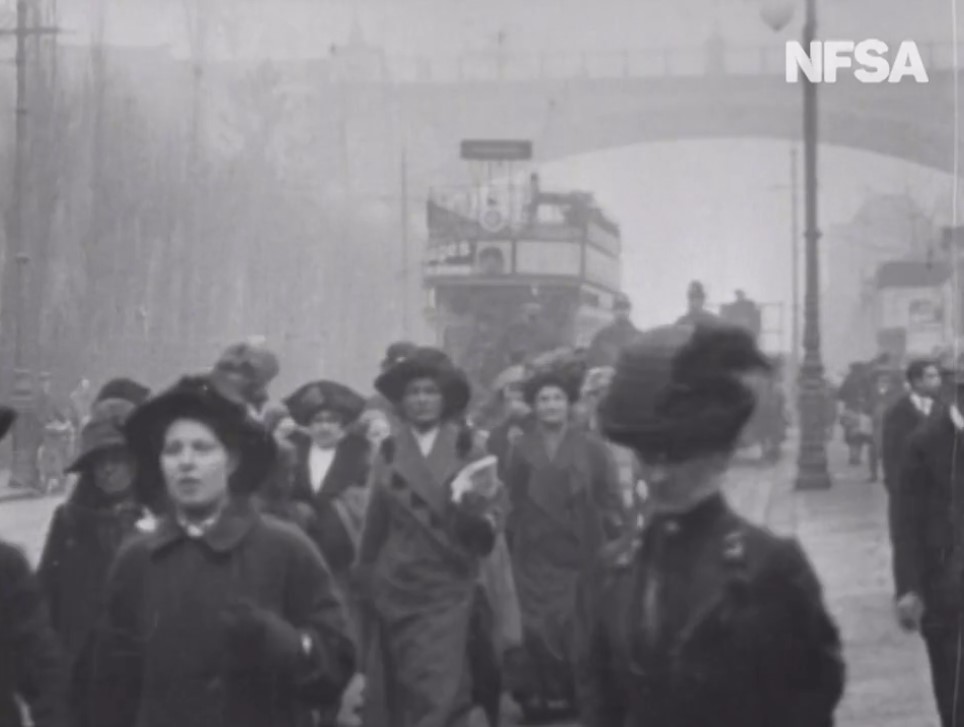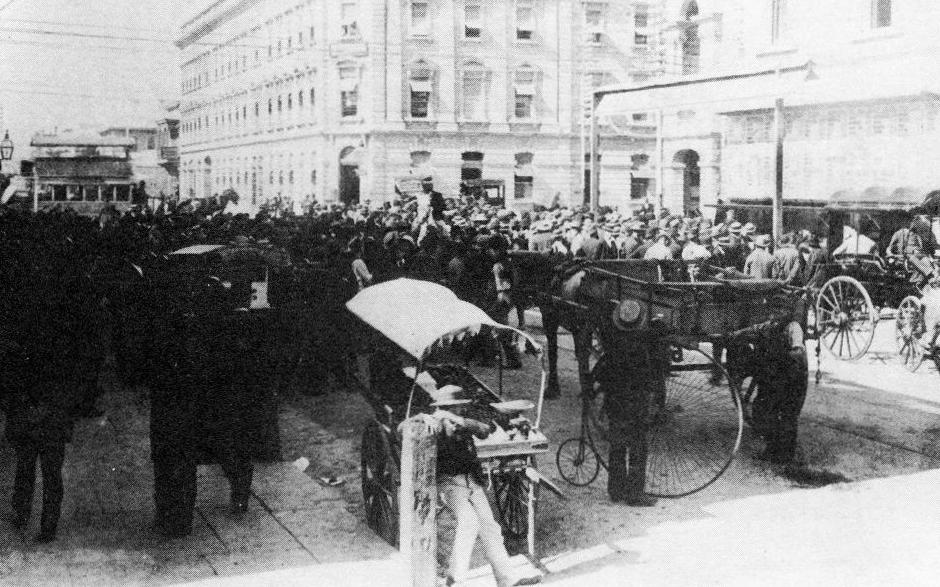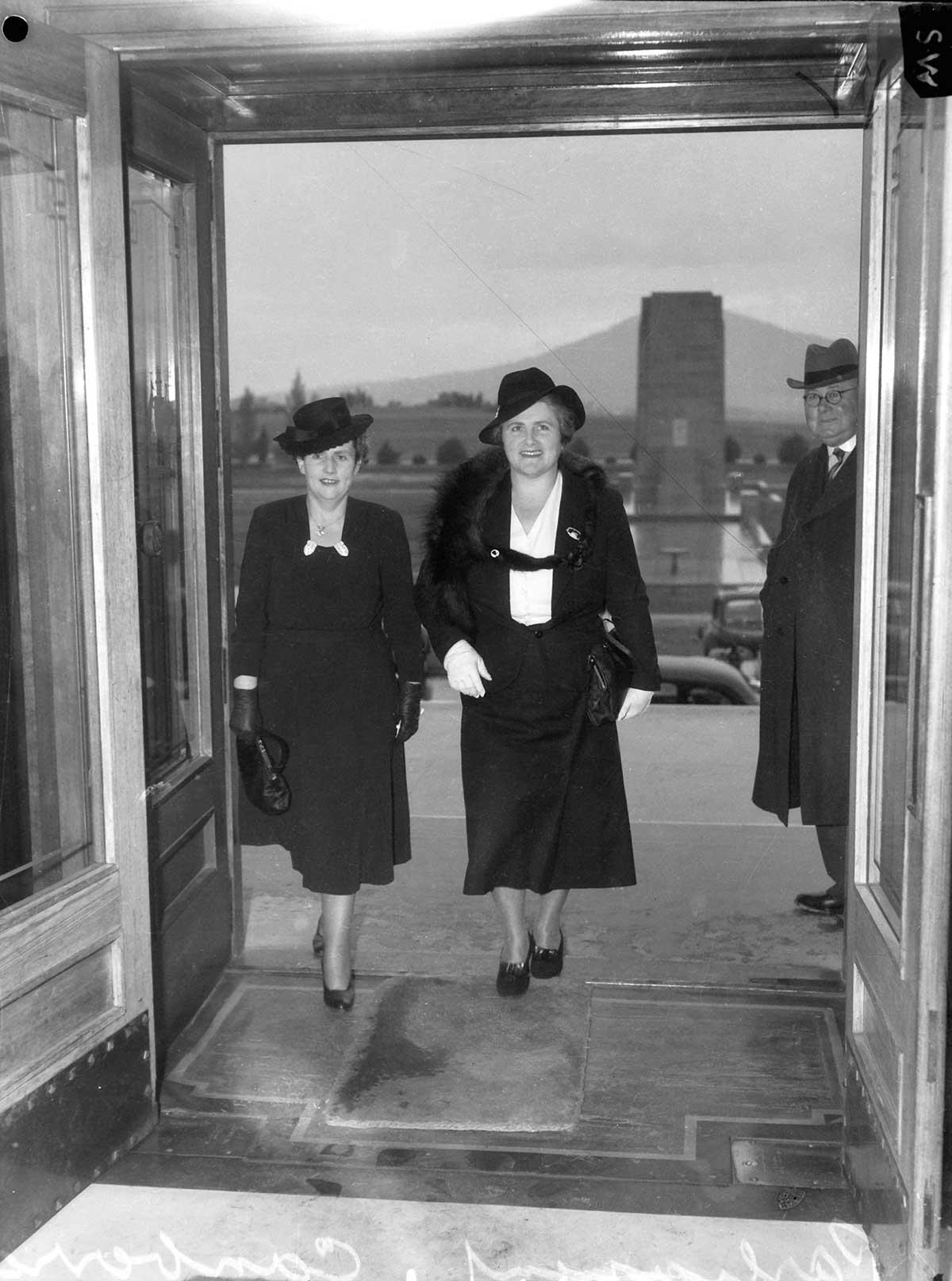Women’s suffrage
1902: Commonwealth Franchise Act gives women the vote in federal elections
Women’s suffrage
1902: Commonwealth Franchise Act gives women the vote in federal elections
In a snapshot
When Australia federated in 1901, only women who had the right to vote in their home state could vote in federal elections. Women in South Australia and some in Western Australia had been granted the right to vote.
After pressure from suffragists and some politicians, the Commonwealth Franchise Act was enacted on 12 June 1902. The Act gave women in Australia over the age of 21 the right to vote in federal elections. The right to vote in federal elections was not granted to First Nations women or men until 1962.
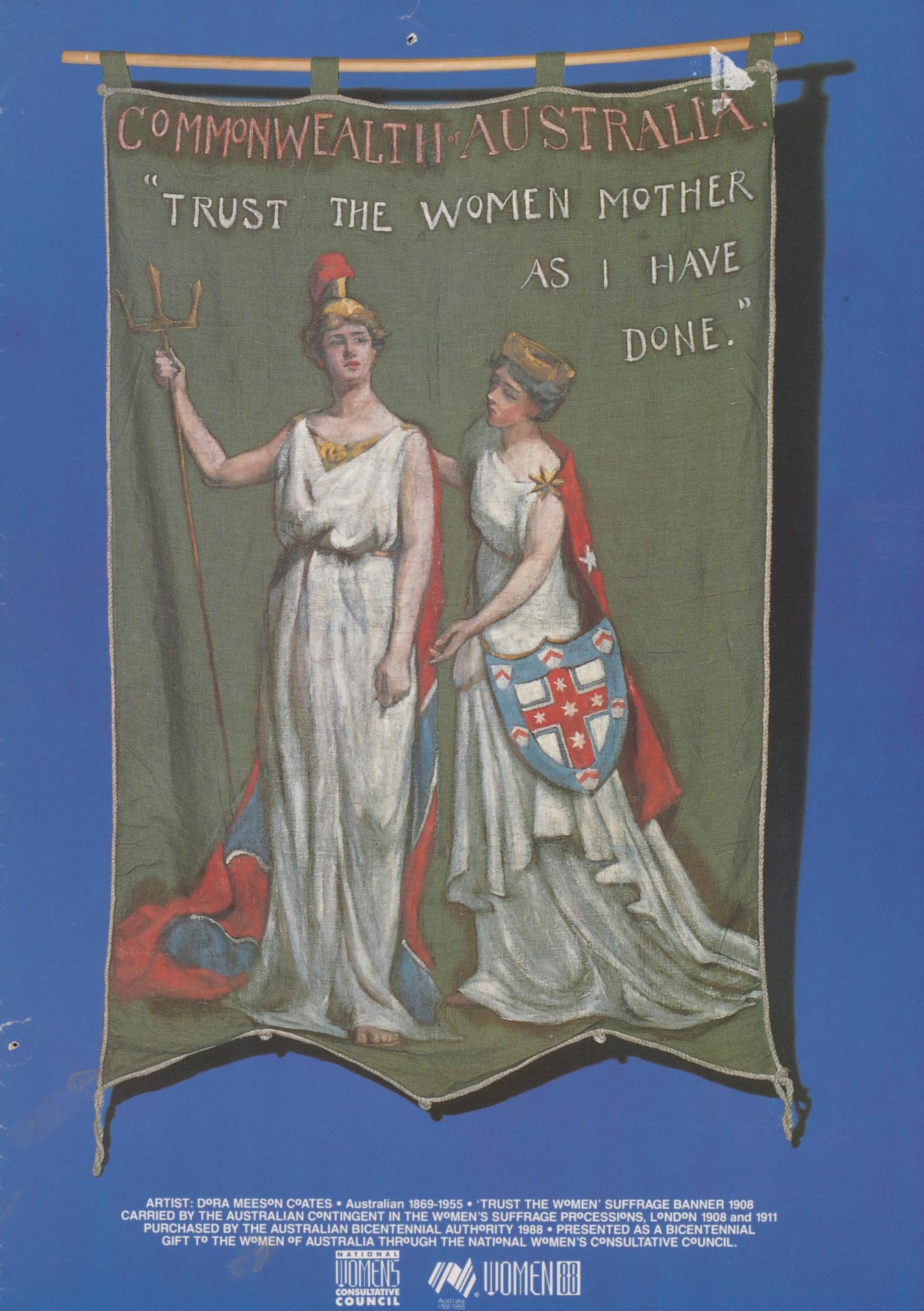
 Can you find out?
Can you find out?
1. What was the most common reason that many people in the 1800s opposed giving women the vote?
2. What was the 1902 Commonwealth Franchise Bill and why was it important?
3. What did some leading Australian suffragists do after their success in Australia?
What voting rights did women have in the Australian colonies?
Before Federation in 1901 Australia was made up of six separate colonies, each with its own system of government. Some women campaigned for colonial governments to give them the right to vote. These women were known as suffragists. To build support for women’s voting rights suffragists held rallies and meetings, wrote letters, wrote articles for newspapers, gave public speeches and met with politicians.
But many people still opposed female suffrage. They argued that women were better suited to home duties and shouldn’t take part in politics.
Before 1901 only two Australian colonies had given women the right to vote: South Australia in 1894 and Western Australia in 1899. South Australia granted all women the right to vote. First Nations women were excluded in Western Australia. South Australian women were also granted the right to stand for parliament, making that colony the first place in the world to give equal political rights to both men and women.

Could women vote under the new Australian Constitution?
In 1897 as the Australian colonies were deciding on whether or not to federate, politicians attended a conference to create a draft Australian Constitution. They debated whether the new Constitution should give Australian women the right to vote in federal elections. They decided that only women who had the right to vote in their home state would be given the right to vote in federal elections. This meant that when Australia federated in 1901, only women in South Australia and Western Australia had the right to vote.
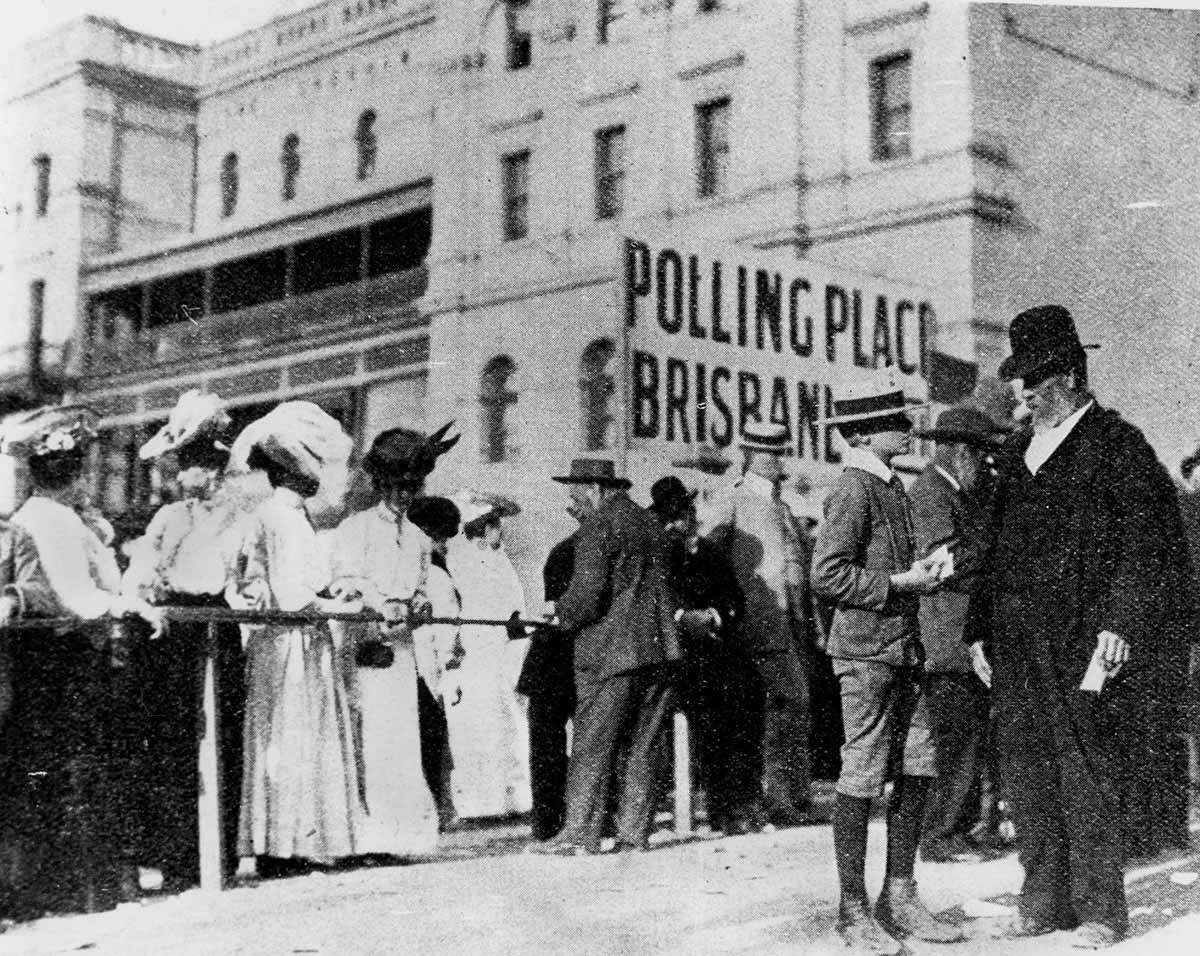
How did women win the right to vote?
After the decision at the 1897 Constitution conference, suffragists kept campaigning for women’s voting rights. They argued that the Constitution should be changed. On 9 April 1902 Senator Richard O’Connor introduced the Commonwealth Franchise Bill into the Senate. If it passed, the Bill would allow women and some non-European migrants to vote. Although many politicians still opposed female suffrage the states reached an agreement. Women would be given the vote but non-European migrants would not.
Research Task
The 1902 Act also gave women the right to be elected to the Australian Parliament. In which year were the first women elected to the Australian Parliament?
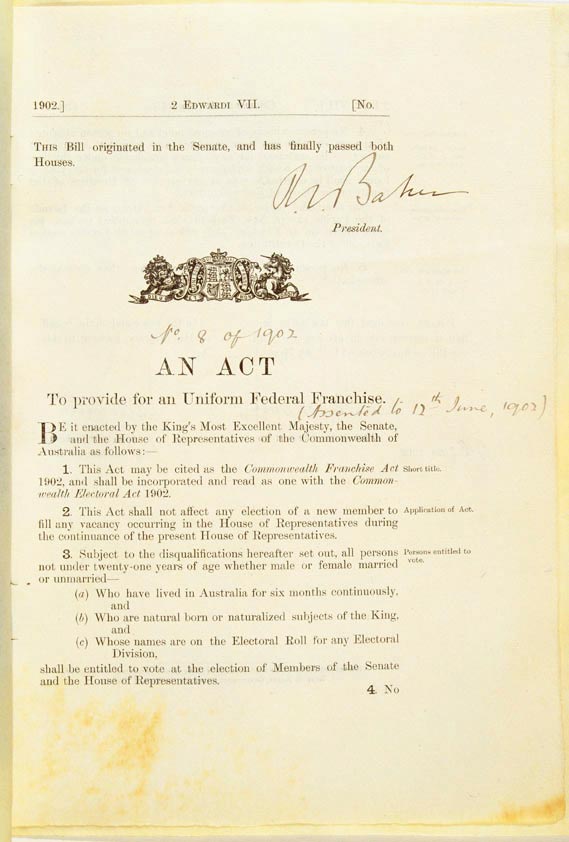
On 12 June 1902 the Bill became law. Women in Australia over the age of 21 could now vote in national elections and stand for election in the Australian Parliament. Although this was an important step, many non-European residents and most First Nations peoples still weren’t allowed to vote in national elections. First Nations men and women only gained the right to vote in national elections in 1962 after an amendment to the Commonwealth Electoral Act.
‘I see no reason in the world why we should continue to impose laws which have to be obeyed by the women of the community without giving them some voice in the election of the members who make those laws.’
How did Australian suffragists help women around the world?
Australia was one of the first places in the world to allow women to vote. Women in other countries, especially England and the United States, asked Australian suffragists for their advice and help. For example, important Australian suffragist Vida Goldstein travelled to England and the United States to give speeches and take part in marches.
The suffrage banner shown in the picture above was created by the Australian artist Dora Meeson. Vida Goldstein and other Australian women carried it at a march in London in 1908. The banner asks ‘Mother England’ to give women the right to vote as Australia had done in 1902.
Read a longer version of this Defining Moment on the National Museum of Australia’s website.
 What did you learn?
What did you learn?
1. What was the most common reason that many people in the 1800s opposed giving women the vote?
2. What was the 1902 Commonwealth Franchise Bill and why was it important?
3. What did some leading Australian suffragists do after their success in Australia?






